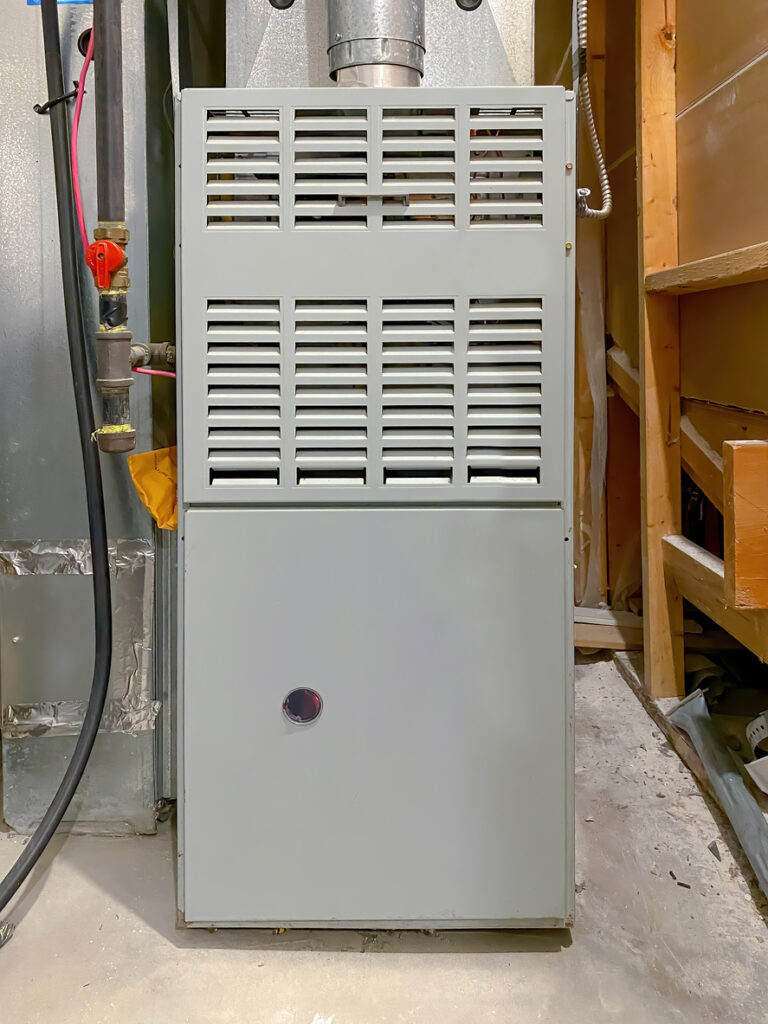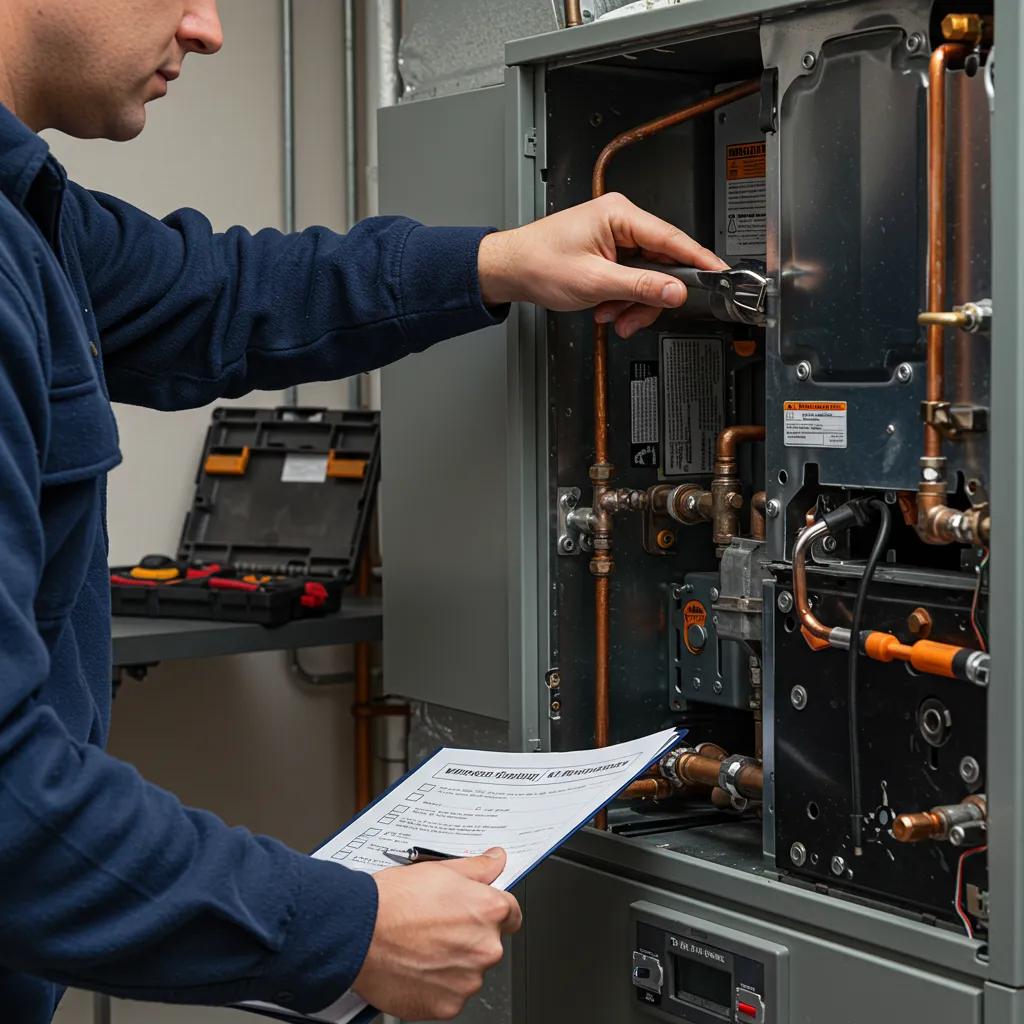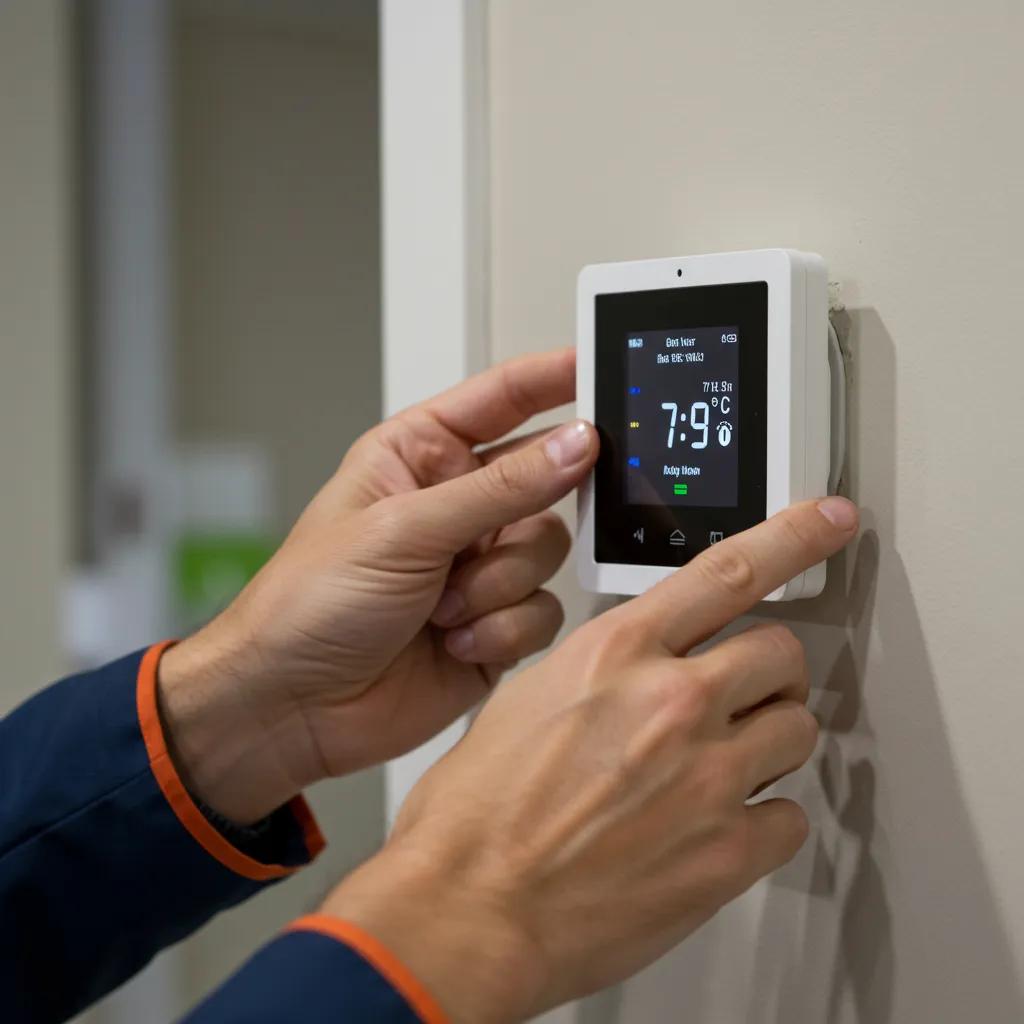
Smart Ways to Boost Your Furnace's Efficiency and Trim Heating Expenses
Keeping your furnace running efficiently is key to cutting down on heating costs and maximizing your energy savings during Houston’s cooler spells. By combining regular check-ups, smart thermostat settings, smart insulation choices, and expert assessments, you can ensure your home stays comfortably warm while your utility bills shrink. This guide lays out five essential strategies—routine furnace care, optimizing your thermostat, sealing up your home and adding insulation, getting efficiency checks, and exploring advanced options with professional help—to give you practical steps for better system performance. Alongside easy DIY tips, Stafford Air of Bellaire’s local HVAC know-how and maintenance services guarantee long-lasting reliability for homes in Houston, Bellaire, West University Place, and Southside Place.
How Does Regular Furnace Maintenance Help It Run Better?
Routine furnace maintenance involves a thorough process of inspecting, cleaning, and fine-tuning your heating system’s parts to improve how it exchanges heat, moves air, and burns fuel. By servicing the burners, cleaning the heat exchanger, and checking all safety features, a well-maintained furnace operates much closer to its advertised AFUE rating, which directly translates to lower heating bills. For instance, annual tune-ups can prevent energy waste of up to 15 percent that happens when components get clogged.
Beyond just cleaning parts, maintenance involves adjusting burners and gas valves for the perfect fuel-to-air mix, stopping energy waste and cutting down on emissions. When filters, blowers, and exhaust passages are clear, air flows smoothly, distributing heat evenly throughout your home. Consistent upkeep also extends the life of your equipment and reduces the chances of unexpected breakdowns, saving you from costly emergency repairs and ensuring steady energy savings.
What Are the Must-Do Checks for an Annual Furnace Service?

Before the heating season kicks into high gear, following a structured service checklist makes sure no crucial step is missed:
- Inspect and clean the burner assembly to ensure complete combustion and prevent soot buildup.
- Swap out or clean the air filter to keep airflow unrestricted and reduce the blower’s energy use.
- Examine the heat exchanger for any cracks to guarantee safe operation and optimal heat transfer.
- Lubricate the bearings in the blower and motor to minimize friction and prevent overheating.
- Test all safety controls and the ignition system to confirm reliable startups and uninterrupted heating.
Ticking off these tasks every year ensures your furnace performs according to the manufacturer’s standards and can lead to an additional 12 percent in energy savings, especially in Houston’s climate with its varying humidity levels.
How Does Cleaning or Replacing Furnace Filters Improve Airflow?
A clean furnace filter provides a clear path for your conditioned air, reducing resistance as air passes through the system and lowering the energy needed by the fan. When filters get clogged with dust and debris, airflow becomes restricted, forcing the blower motor to work harder and increasing electricity consumption. Checking and replacing filters monthly keeps airflow consistent, helps maintain even temperatures, and can cut heating costs by as much as 10 percent.
Maintaining your filter also protects the furnace’s inner workings from dust buildup, preserving the heat exchanger’s condition and preventing shutdowns due to overheating. For example, simply swapping out a standard pleated filter every 90 days keeps your system running efficiently and improves indoor air quality without needing professional help.
Why Is a Professional Furnace Tune-Up Crucial for Saving Energy?
Professional furnace tune-ups combine precise diagnostics with specialized cleaning tools to bring your system back to its peak performance. A skilled technician will adjust gas pressure, check electrical connections, and verify combustion efficiency using advanced equipment. This level of service provides a deeper clean and more accurate calibration than what homeowners can typically achieve, potentially unlocking an extra 5 percent in efficiency gains beyond just changing filters and basic upkeep.
Stafford Air of Bellaire’s certified tune-up service includes a detailed performance report and personalized advice, ensuring every part—from the thermostat controls to the exhaust ventilation—operates at its best in Houston’s unpredictable weather.
When Is the Best Time to Schedule Furnace Maintenance in Houston?
Scheduling your furnace maintenance in early autumn is ideal, allowing technicians to service your system before the busiest heating season begins. The milder weeks in September mean shorter wait times for appointments and ensure your system is ready before any sudden cold snaps hit. By booking your maintenance between mid-September and early October, you secure priority service and benefit from preventative inspections that can head off mid-winter emergency calls.
What Are the Best Thermostat Settings for Maximum Furnace Efficiency?
Finding the sweet spot with your thermostat settings means balancing comfort with energy savings: just lowering the temperature by 1 °C (about 2 °F) can lead to heating bills that are up to 10 percent lower. Setting back the temperature automatically overnight and when you’re away from home reduces fuel consumption without making your living space uncomfortable. Upgrading to a smart thermostat takes control to the next level by learning your household’s schedule and local weather patterns, dynamically adjusting temperatures for peak efficiency.
In Houston’s milder winters, setting your thermostat to around 18 °C (64 °F) during the day and dropping it to 15 °C (59 °F) at night keeps you comfortable while using less energy. Using programmable schedules that match your daily routine can lead to consistent savings year after year.
How Does a Smart Thermostat Optimize Temperature Control?
A smart thermostat uses built-in sensors and intelligent learning algorithms to predict heating needs, adjusting temperature settings in real time. By analyzing when your home is occupied, local weather forecasts, and past usage data, the device avoids heating empty rooms. This adaptive control can improve how efficiently your furnace cycles and cut heating expenses by up to 12 percent.
What Are the Recommended Thermostat Temperatures for Lower Heating Bills?
Keeping your thermostat set between 18 °C and 20 °C during the day and lowering it to 15 °C–16 °C while you sleep strikes a good balance between comfort and efficiency. Every degree you lower the temperature can result in roughly 6–8 percent savings on your heating bills, meaning even small adjustments can lead to significant energy savings without sacrificing indoor warmth.
How Can You Program Your Thermostat for Energy Savings in Houston Homes?
Start by mapping out your typical daily schedule—when you leave for work, when the kids are at school, and your evening routines—then assign appropriate temperature settings for those times. Use the thermostat’s built-in scheduling features to automate warming up the house before you wake and setting it back when you leave or go to bed. For example, program it to reach 20 °C about an hour before you wake up, drop to 16 °C while you’re at work, and gradually warm back up to 20 °C before you return home. This approach takes advantage of your furnace’s efficient ramp-up capabilities and prevents unnecessary heating when no one is home.
What Are the Benefits of Professional Smart Thermostat Installation?

Having a professional install your smart thermostat ensures correct wiring, system compatibility, and proper network setup, preventing inaccurate readings that can lead to energy waste. An expert installer can configure advanced features like geofencing, alerts, and remote access, giving you the power to monitor and adjust settings for continuous savings. Stafford Air of Bellaire’s installation service includes system calibration and a walkthrough to help you get the most out of your new thermostat’s energy-saving potential right from the start.
How Do Home Insulation and Air Sealing Impact Furnace Efficiency?
Effective insulation and air sealing work together to minimize heat loss by creating a barrier against heat escaping through conduction and convection. Insulation in your attic, walls, and floors slows down the rate at which warm air leaves your home, while sealing up gaps around windows, doors, and duct connections stops drafts. When combined, these measures allow your furnace to maintain your desired temperature with fewer cycles, significantly cutting heating costs by up to 15 percent in Houston’s diverse climate.
Sealing up leaks that let air escape also prevents humid outdoor air from entering your home, reducing the risk of condensation on your heat exchanger and protecting your system’s lifespan. Properly insulated ductwork further ensures that the conditioned air stays warm as it travels from the furnace to your living spaces.
Which Areas Should You Insulate to Minimize Heat Loss?
| Location | Recommended Insulation Type | R-Value Target |
|---|---|---|
| Attic | Loose-fill or batt insulation | R-38 to R-49 |
| Exterior walls | Cavity wall batts or blown-in | R-13 to R-21 |
| Basement ceiling | Rigid foam boards | R-15 to R-25 |
How Can Sealing Air Leaks Around Your Furnace Improve Heating Performance?
Air leaks around where your furnace is installed and at duct connections allow heated air to escape before it reaches your rooms, forcing your system to run longer. Using high-temperature sealant or foil tape on duct joints and sealing gaps around furnace vents stops this energy waste. This targeted sealing improves airflow efficiency and reduces the workload on your blower motor, contributing to heating expenses that are up to 8 percent lower.
What Are the Benefits of Insulating Heating Ducts?
Insulated ducts keep the supply air warm as it travels from the furnace to different rooms, minimizing heat loss through unconditioned areas like crawl spaces or attics. Less heat loss means your furnace doesn’t need to run as often to maintain your set temperature, saving energy and extending the equipment’s life. Properly insulated ducts also help balance system pressure, leading to more consistent airflow and improved indoor comfort.
What Are the Signs Your Furnace Is Losing Efficiency?
Catching efficiency problems early can prevent your energy bills from soaring and avoid unexpected system failures. Common signs include rooms that aren’t heating evenly, longer furnace run times than usual, increased energy usage even when settings haven’t changed, and strange noises coming from the blower or burner assembly. Noticing these symptoms prompts timely action to restore performance and prevent costly breakdowns.
How Can You Identify Common Furnace Efficiency Problems?
Typical indicators of declining furnace efficiency include:
- Uneven Heating – Cold spots in certain rooms often point to airflow issues or problems with the heat exchanger.
- Frequent Cycling – The furnace turning on and off rapidly can signal a clogged filter or incorrect gas pressure.
- Rising Energy Bills – A sudden increase in costs without any change in your habits suggests your furnace’s AFUE rating has dropped.
Spotting these issues early allows you to schedule filter replacements or professional servicing before the system is put under too much strain, which could further increase your heating costs.
When Should You Consider Upgrading Your Furnace for Better Energy Savings?
If your furnace is more than 15 years old or has an AFUE rating below 80 percent, upgrading to a modern unit with an efficiency rating of 95 percent or higher can result in 10–15 percent annual energy savings. High-efficiency models feature advanced components like variable-speed blowers and modulating burners, which adjust their output based on your home’s heating needs, drastically reducing fuel waste compared to older single-stage systems.
How Do Furnace Efficiency Ratings (AFUE) Impact Your Heating Costs?
AFUE, which stands for Annual Fuel Utilization Efficiency, tells you what percentage of the fuel your furnace consumes is actually converted into heat for your home. A furnace with a 95 percent AFUE rating means it converts 95 percent of the gas it uses into warmth, with only 5 percent lost through exhaust. In contrast, a furnace with an 80 percent AFUE rating wastes 20 percent of the fuel, leading to significantly higher annual gas bills for the same amount of heat delivered.
What Advanced Solutions Can Further Improve Furnace Efficiency?
Beyond standard maintenance, advanced heating solutions include integrating hybrid technology, implementing zoned heating controls, and conducting professional energy audits to uncover hidden savings. Hybrid systems pair a high-efficiency heat pump with a gas furnace, automatically choosing the most cost-effective heat source based on outside temperatures. Zone heating allows you to control temperatures in different areas of your home independently, ensuring each space is heated only when and where it’s needed.
How Does Heat Pump Integration Enhance Hybrid Heating Systems?
A heat pump works by drawing heat from the outside air to warm your home, operating most efficiently in moderate temperatures. When the outdoor temperature drops below a certain point, the gas furnace kicks in to maintain comfort, ensuring the system always uses the most economical energy source available. This seamless integration can reduce your total heating energy consumption by up to 30 percent during Houston’s transitional spring and fall seasons.
What Are Zone Heating Systems and How Do They Save Energy?
Zone heating divides your home into several areas, each with its own thermostat and motorized dampers controlling airflow. By heating only the zones that are currently occupied, the system prevents energy waste in rooms that aren’t being used. Properly set up zone heating can cut down on fuel consumption by as much as 20 percent, improving both your comfort and your budget.
How Can a Home Energy Audit Identify Furnace Efficiency Improvements?
A professional energy audit uses tools like blower-door tests, duct leakage measurements, and thermal imaging to pinpoint areas where insulation is lacking, airflow is restricted, or ducts are losing heat. The detailed report from the audit will prioritize recommended upgrades—such as adding insulation, sealing leaks, or modifying ductwork—that offer the best returns in efficiency. Improvements identified through an audit can uncover up to an additional 15 percent in savings beyond routine maintenance.
When Should You Call a Professional for Furnace Repair or Maintenance?
Calling in a professional becomes necessary when furnace problems go beyond simple maintenance tasks or pose potential safety risks. Certified HVAC technicians have the specialized tools, diagnostic skills, and manufacturer training needed to handle complex repairs, fine-tune combustion, and perform system upgrades reliably. Promptly seeking professional help helps maintain your equipment’s health and secures long-term energy savings.
What Furnace Issues Require Immediate Professional Attention?
- Gas smell or carbon monoxide alarms – These are critical signs of leaks or incomplete combustion that need immediate inspection.
- Persistent ignition failures – This could indicate faulty controls or issues with the gas valve.
- Grinding or scraping noises – These sounds often warn of worn bearings or damage to the blower assembly that could lead to increased energy use.
How Does Stafford Air of Bellaire Provide Reliable Furnace Services in Houston?
Stafford Air of Bellaire provides comprehensive installation, repair, and maintenance services specifically designed for Houston’s climate challenges. With their local expertise and commitment to prompt scheduling, their technicians meticulously calibrate, clean, and optimize every part of your furnace to ensure peak performance. Clients receive clear service reports, actionable recommendations, and ongoing support to maintain their energy-saving results.
